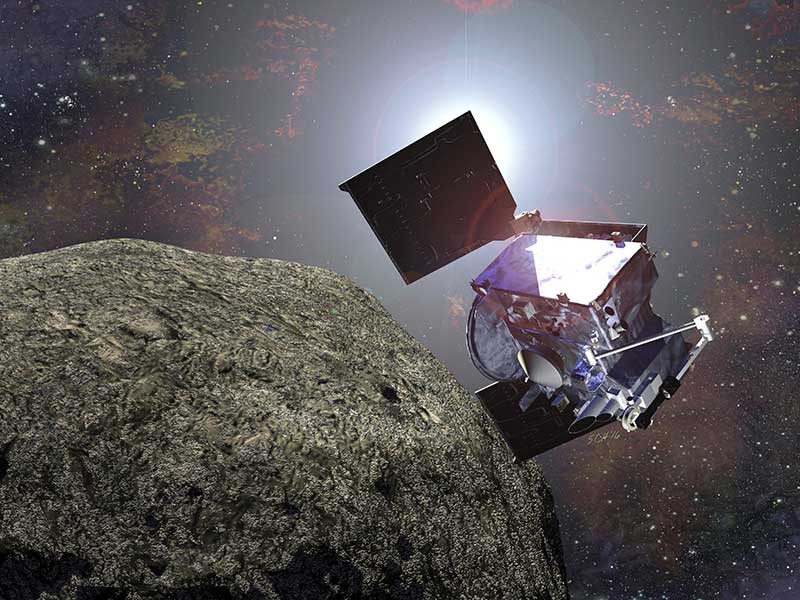USU tech arrives at asteroid
Technology from Utah State University arrived at its destination, 121 million kilometers away from Earth and NASA used the tech to collect part of an asteroid in order to learn about the early years of the solar system.
The Origins, Spectral Interpretation, Resource Identification, Security-Regolith Explorer, known as OSIRIS-REx arrived at the asteroid Bennu on Monday morning after a two-year journey from Earth, according to the Utah State Space Dynamics Laboratory. The craft launched from Cape Canaveral, FL on Sept. 8, 2016.
The Space Dynamics Laboratory provided the technology for the cameras aboard the spacecraft, known as OCAMS.
“The detector assemblies have been working as designed,” said Jed Hancock, SDL’s executive director of programs and operations and SDL program manager for OSIRIS-REx.
Over the next year, NASA will use the cameras to map the surface of the asteroid and choose a spot to collect some material.
Bennu is an ancient asteroid, from the origins of the solar system. It is about 500 meters in diameter, the distance between Old Main Hill and the Merrill-Cazier Library.
When NASA chooses a suitable spot for collection, OSIRIS-REx will lower an arm connected to an air-blasting mechanism. It will shoot nitrogen at the surface to kick up dust and rocks, then collect that in a canister in the arm. It can collect up to four pounds of material.
Using the arm to bounce off the surface “like a pogo stick,” Hancock said the spacecraft will place the sample in a fireproof section of the craft, then shoot the sample back at Earth.
In 2023, if all goes to plan, Hancock said the sample will land in the Utah desert, where it will be picked up and studied.
—carter.moore@aggiemail.usu.edu
@carterthegrreat

